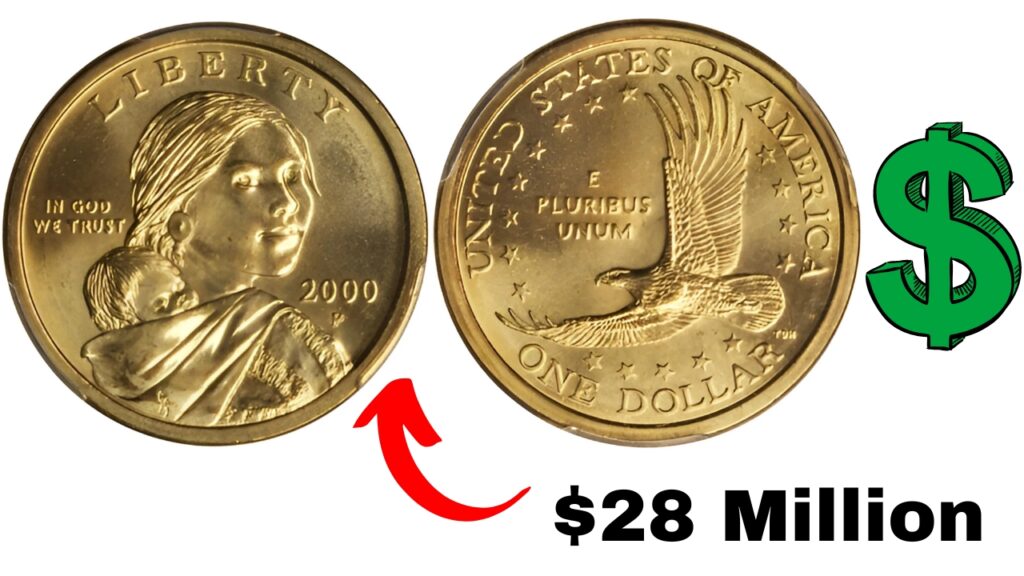Rare Coin: The jingling change in your pocket or those forgotten coins tucked away in an old jacket might appear trivial—just a mix of pennies and nickels that hardly warrant a second glance.
However, buried within this ordinary currency could be an incredible treasure, turning the simple act of sifting through your change into a potentially life-altering moment.
Within the realm of American coins, select rarities command astonishing amounts that stretch the limits of imagination, with some pieces possibly reaching up to $28 million if they were to be auctioned today.
At the pinnacle of American numismatic treasures is none other than the elusive 1913 Liberty Head nickel.
With just five known specimens in circulation, this coin exemplifies a unique blend of rarity, mystery, and fascination that drives collectors to great lengths—and even greater expenditures.
“The 1913 Liberty Head nickel is extraordinary; it quite literally shouldn’t exist,” shares Marcus Davidson, a seasoned numismatist who has dedicated over thirty years to studying American coins.
“By 1913, the Mint had officially moved on to the Buffalo nickel design. Yet, inexplicably, five Liberty Head nickels dated that year were minted under bizarre circumstances, earning it the title of the most famous American coin.”
The last public sale of a 1913 Liberty Head nickel took place in 2010 when the Olsen specimen was sold for $3.7 million.
Experts speculate that, given the surge in collector interest and the dwindling supply of investment-grade rarities, a specimen in top condition could fetch between $20-28 million at auction, especially if linked to renowned collectors such as Louis Eliasberg or King Farouk of Egypt.
While the odds of unearthing one of these five known specimens in circulation are exceedingly slim, their existence serves as a reminder that remarkable value can often be found in what seems like everyday currency, and occasionally, new treasures emerge from unforeseen sources.
Rare Coin Pocket Change Treasures Within Reach
The 1913 Liberty nickel may represent the ultimate goal for coin collectors, but several other lesser-known rarities carry considerable value and present the enticing chance for discovery in everyday transactions or through inherited collections.
Among these lesser-known treasures, the 1969-S Lincoln cent featuring a doubled die obverse stands out as one of the most captivating.
This coin was produced when the die used for stamping became misaligned, resulting in noticeable doubling on the date and lettering that can be seen without magnification.
With fewer than 100 authenticated examples known, these pennies frequently auction between $50,000 and $75,000, depending on their condition.
“What intrigues collectors about the 1969-S doubled die penny is its presence in circulation,” observes Elizabeth Chen, curator of American coinage at a leading East Coast museum. “Many people found them amidst their change, often long after they were minted.”
Some fortunate individuals who recognized their value early on hoarded multiple examples from bank rolls, turning a few dollars in pennies into small fortunes.
Similarly, the 1972 Lincoln cent showcases another doubled die variety that ranges in value from $500 to $3,000 depending on the condition—still quite significant for a coin that may occasionally still be found in circulation.
Even more accessible, the 1955 doubled die cent boasts about 10,000-15,000 minted examples.
These coins can sell for between $1,000 and $3,500 in circulated condition, while pristine uncirculated specimens can reach $25,000 or more.
Potential riches are also found among quarters. The 1932-D and 1932-S Washington quarters—the inaugural coins of this design—boast relatively low mintages.
Finding one among your pocket change is possible, with values ranging from $100 for heavily circulated examples to $5,000 or above for those showing minimal wear.
In recent years, errors involving state quarters have also piqued collector interest.
The 2004-D Wisconsin quarter featuring an extra “leaf” on the corn stalk can fetch $200 to $500, while certain off-center strikes or wrong planchet errors (producing coins on metals meant for different denominations) can command thousands, depending on the specifics of the error.
Rare Coin The Detective Work of Coin Hunting
Uncovering valuable coins demands a keen eye for the details that separate the ordinary from the magnificent.
Date and mint mark combinations serve as the first and most essential identifiers, with certain years and production facilities yielding inherently rarer coins due to their limited production or unique historical contexts.
“The mint mark—a petite letter showing where a coin was struck—often proves invaluable,” explains Robert Thompson, who transitioned from casual collector to full-time professional after finding a rare die variety in a bank roll of nickels.
“For example, a 1950-D Jefferson nickel might be worth $20 or more, even in circulated condition, while the more common 1950 or 1950-S could be worth only face value unless in pristine condition.”
These mint marks typically show on the obverse (front) or reverse side of the coins, with the position varying based on the denomination and year.
For modern coins, check for the tiny letter located near or beneath the date—D for Denver, S for San Francisco, or no mark indicating production in Philadelphia, which has held true for most of American coinage history.
In addition to date and mint combinations, error coins—those with manufacturing flaws—often carry attractive premiums.
Off-center strikes, double strikes, missing design features, or wrong planchet errors generate unique pieces that avid collectors eagerly seek.
“You don’t require expensive tools to start identifying potentially valuable coins,” Davidson stresses. “A good magnifying glass, sufficient lighting, and reference materials covering key dates and varieties will benefit newcomers greatly.”
The U.S. Mint has produced billions of coins, but knowing exactly which dates, mint marks, and error varieties to focus on streamlines the search process considerably.
Rare Coin Where to Hunt for Numismatic Treasure
Your quest for valuable coins can commence with the change already in your possession. Inspect each coin with care, especially older pieces displaying distinctive wear or odd characteristics.
Make sure to focus on pennies and nickels, as they often circulate longer than higher denominations, providing more opportunities to find hidden gems from days gone by.
Bank rolls can also be an excellent hunting ground with a minimal investment. For roughly $25, collectors can obtain a roll of half-dollars that may contain silver coins minted in 1964 or earlier, or 40% silver pieces from 1965-1970.
Searching through rolls of cents may yield wheat pennies (1909-1958) or even Indian Head cents occasionally making their way back into circulation from previous collections.
Family collections passed down through generations often harbor overlooked fortunes.
These inherited assemblages frequently include coins set aside decades ago when specific dates and mint marks were still in circulation, but have now become rare.
“I’ve examined countless collections that families believed contained nothing but common coins, only to discover individual pieces worth thousands,” Chen recalls.
“One particularly striking example involved a Mason jar filled with what seemed like ordinary pennies. Mixed within were three 1909-S VDB Lincoln cents valued at about $1,000 each, even in worn condition.”
Estate sales, flea markets, and antique stores may also provide ample opportunities for significant finds for those who know what to look for.
Coins that have been misidentified or priced based solely on their face value rather than their collector worth present opportunities for considerable returns on modest investments.
Rare Coin Preservation and Authentication
Once you discover potentially valuable coins, proper handling is essential. Never resort to cleaning coins with abrasive materials, harsh chemicals, or even soap and water.
The original surfaces, including the natural toning and patina that develop over the years, significantly contribute to a coin’s authenticity and value.
“The first impulse when finding what might be a valuable coin is often to clean it— which is exactly the wrong move,” warns Thompson.
“A cleaned rare coin can lose a significant chunk of its value, sometimes as much as 50-90%, compared to examples with original surfaces.”
For coins potentially worth significant money, seeking professional authentication through services like Professional Coin Grading Service (PCGS) or the Numismatic Guaranty Corporation (NGC) can verify authenticity and assess condition.
These companies encapsulate coins in tamper-evident holders with guaranteed authenticity, making them easier to sell and instilling confidence for prospective buyers.
Rare Coin The Ongoing Treasure Hunt
The chance to uncover exceptional value among seemingly ordinary coins ensures that numismatics—the pursuit of collecting currency—remains one of America’s most accessible and enduring hobbies.
While the likelihood of finding that $28 million nickel is slim, the reality of coming across coins worth hundreds or even thousands of dollars is entirely plausible with the right knowledge, persistence, and detail-oriented approach.
“Every collection starts with a single coin that captivates someone’s interest,” Davidson reflects. “The beauty of this endeavor lies in the fact that potential treasures are constantly circulating through everyday life.”
Next time you receive change from a purchase, take a moment to closely examine those coins. You never know what might be hiding in plain sight.
Whether driven by potential investment, historical significance, or the sheer thrill of discovery, taking the time to scrutinize your pocket change transforms a mundane experience into an adventure filled with genuine possibility.
That neglected jar of coins collecting dust could contain mere currency—or it might hold a life-altering treasure just waiting for someone discerning to appreciate its value.


